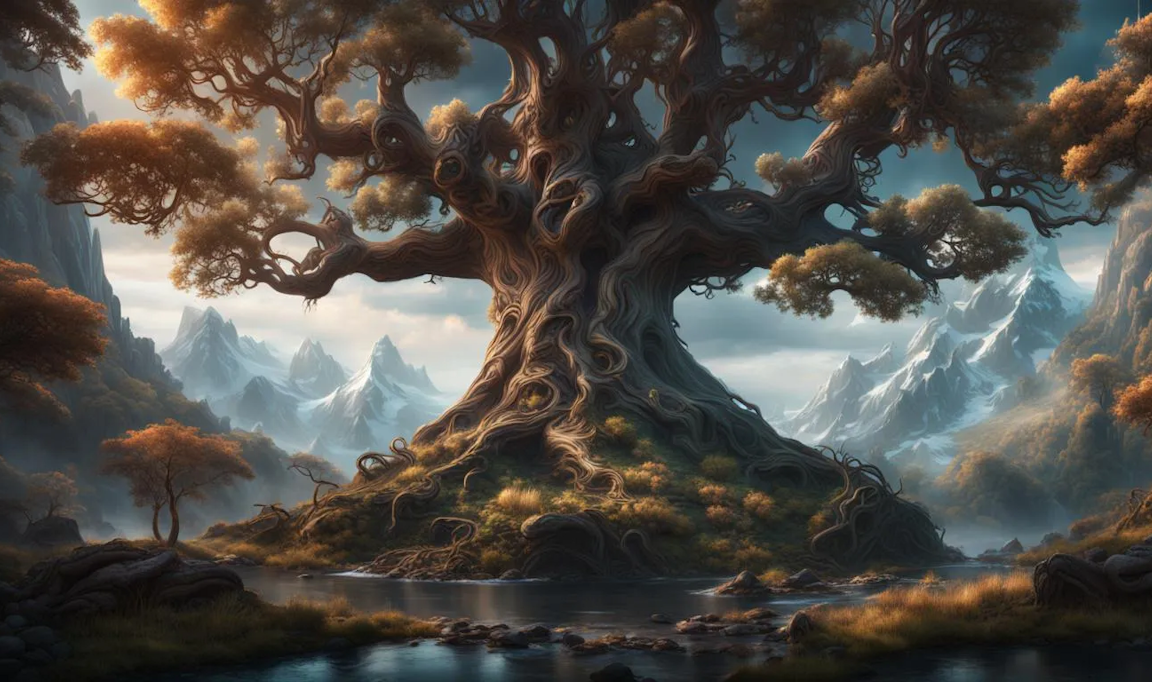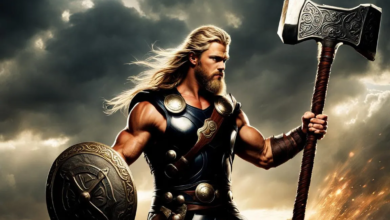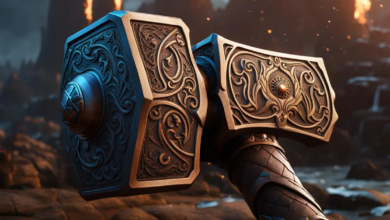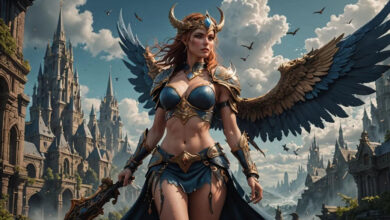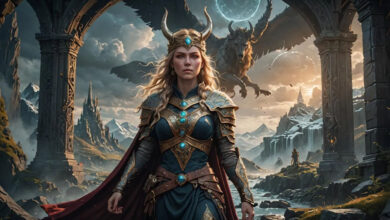In Norse mythology, Yggdrasil stands as the cosmic tree that anchors all of creation, uniting the heavens, the earth, and the underworld in its vast branches and roots. This immense ash tree symbolizes the structure of the universe, embodying the interconnectedness of all things and serving as the central axis around which the Norse cosmological system revolves. Yggdrasil’s significance extends beyond its physical representation, embodying the themes of life, growth, decay, and rebirth, which are central to Norse mythology.
The mythology describes Yggdrasil as supporting nine worlds within its branches and roots, each world home to various beings, including gods, giants, humans, and the dead. Among these worlds are Asgard, the realm of the Aesir gods; Midgard, the world of humans, connected to Asgard by the rainbow bridge Bifrost; Jotunheim, the land of the giants; Niflheim, a world of ice and cold; Muspelheim, a realm of fire; Helheim, the domain of the dead who did not die in battle; Alfheim, the home of the light elves; Svartalfheim, the realm of the dwarves; and Vanaheim, the world of the Vanir gods.
Yggdrasil itself is said to be constantly under siege. It faces hardships from various sources: its leaves are nibbled by the stag Eikthyrnir and other creatures, its trunk is gnawed by the dragon Nidhogg, and its roots are eroded by the serpent Jormungandr and other unnamed beings. Despite these afflictions, Yggdrasil remains evergreen, symbolizing the resilience and enduring nature of life. The well of Urd, one of the three wells that feed Yggdrasil, lies at its base, where the gods convene daily to pass judgment. This well is guarded by the Norns, the fates of Norse mythology, who draw water from the well to pour over Yggdrasil’s roots, ensuring its vitality and the continuation of the cycles of life, death, and rebirth.
Yggdrasil’s role in Norse mythology cannot be overstated. It serves not only as the physical and spiritual centre of the cosmos but also as a symbol of the interconnectedness of all things. The tree’s branches reaching into the heavens and its roots delving into the underworld reflect the Norse belief in the vertical structure of the universe, with Yggdrasil connecting the various layers of existence. This structure reinforces the idea that the actions of the gods and mortals alike have repercussions throughout the cosmos, reflecting the interconnected nature of fate and destiny.
Moreover, Yggdrasil is a potent symbol of the cyclical nature of life. Just as the tree experiences growth, decay, and renewal, so too does the Norse cosmos. This cycle is epitomized in the concept of Ragnarok, the prophesied end of the world, which involves the destruction of Yggdrasil, the gods, and the entire cosmos, only for them to be reborn anew. This cycle of creation and destruction reflects the Norse understanding of the world as a dynamic and ever-changing place, where death and rebirth are natural and necessary processes.
In conclusion, Yggdrasil is much more than a mythological tree; it is a complex symbol of life, interconnection, resilience, and cyclical change. Its roots and branches hold together the fabric of the Norse cosmos, serving as a reminder of the unity of all realms of existence. Through Yggdrasil, the ancient Norse expressed their understanding of the world’s structure, the nature of life and death, and the intricate web of fate that binds the universe together. Yggdrasil remains a powerful symbol of the world tree, a concept found in many cultures around the globe, representing the universal themes of life, interdependence, and the eternal cycle of renewal.

